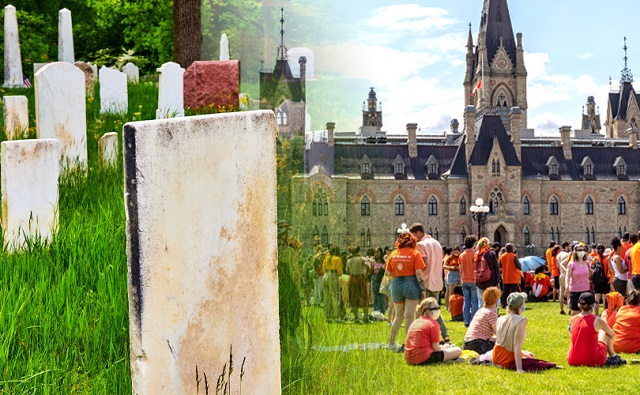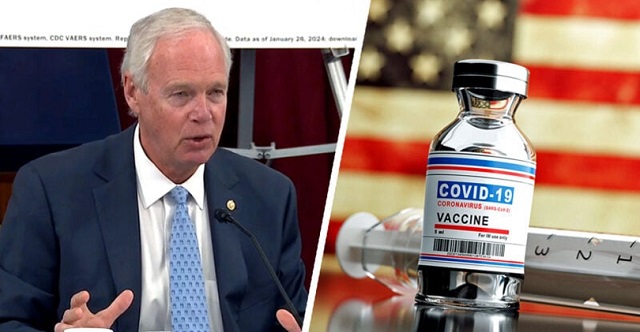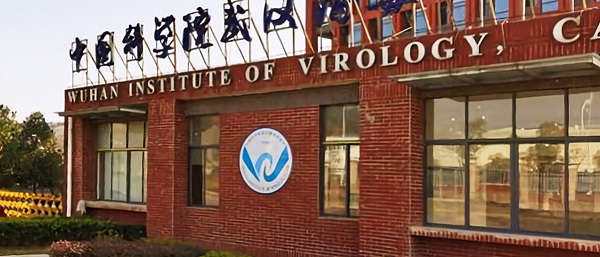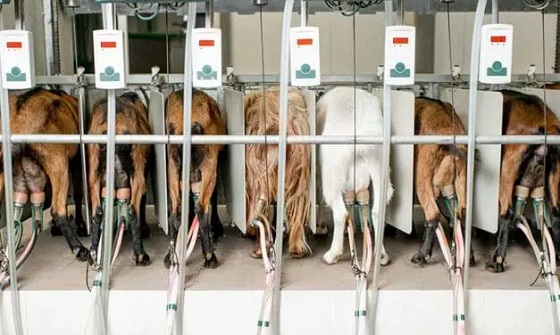National
Despite claims of 215 ‘unmarked graves,’ no bodies have been found at Canadian residential school

From LifeSiteNews
Over 100 churches have been burned or vandalized since the Trudeau government and mainstream media promulgated, without any physical evidence, the narrative that mass ‘unmarked graves’ had been discovered at Kamloops Indian Residential School.
Canada’s Department of Crown-Indigenous Relations has confirmed it has spent millions searching for “unmarked graves” at a now-closed residential school once run by the Catholic Church, despite the fact that no human remains have been found.
In total, some $7.9 million was earmarked for a search of unmarked Indian Residential School graves in Kamloops, British Columbia. According to the spokeswoman for the Crown-Indigenous Relations, Carolane Gratton, the community got the money “for field work, records searches and to secure the Residential School grounds.”
“Details of initiatives taken by Tk’emlups te Secwepemc First Nation are best directed to the community,” noted Gratton.
To date, the Department of Crown-Indigenous Relations has not given a financial accounting under the Access To Information Act as to where the money went. According to the Tk’emlups te Secwepemc First Nation, it “continues to grieve children that are in our care and are focused on the scientific work that needs to be done,” but made no mention of the $7.9 million.
In 2021 and 2022, the mainstream media ran with inflammatory and dubious claims that hundreds of children were buried and disregarded by Catholic priests and nuns who ran some of the schools.
The Tk’emlups te Secwepemc First Nation was more or less the reason there was a large international outcry in 2021, when it claimed it had found 215 “unmarked graves” of kids at the Kamloops Residential School. The claims of remains, however, were not backed by physical evidence, but were rather disturbances in the soil picked up by ground-penetrating radar.
The money given to the First Nation was done so to find the “heartbreaking truth” of the residential school system, according to a 2022 Indian Residential School Sites: Unmarked Burials department briefing note.
“Our thoughts are with survivors, their families and communities as the heartbreaking truth about Residential Schools’ unmarked burials continues to be unveiled,” read the note.
“Funding is available to support communities, survivors and their families on their healing journey through researching, locating and memorializing those children who died while attending Indian Residential Schools.”
Canadian indigenous residential schools, while run by both the Catholic Church and other Christian churches, were mandated and set-up by the federal government and ran from the late 19th century until the last school closed in 1996.
While there were indeed some Catholics who committed serious abuses against native children, the past wrongs led to widespread anti-Catholic sentiment, which boiled over in the summer of 2021 after the discovery of the 215 so-called “unmarked” graves in Kamloops.
While some children did die at the once-mandatory boarding schools, evidence has revealed that many of the children tragically passed away as a result of unsanitary conditions due to the federal government, not the Catholic Church, failing to properly fund the system.
No human remains have been found
Soon after the Kamloops announcement in 2021, other regions claimed the presence of “unmarked graves,” which prompted Canada’s House of Commons under Liberal Prime Minister Justin Trudeau, with the help of all other parties including the Conservatives, to declare the residential school program a “genocide” despite the lack of evidence.
The reality is that to date, no human remains have been found at the Kamloops site or other sites.
In fact, in August 2023, the Pine Creek Residential School, located in Pine Creek, Manitoba, underwent a four-week excavation and yielded no remains.
The excavation was led by a First Nation’s tribe called Minegoziibe Ashinabe, and came after a total of 14 abnormalities were found at the former school by ground-penetrating radar.
There have been other excavations conducted at residential schools that have likewise turned up no human remains.
Since the spring of 2021, over 100 churches, mostly Catholic, have been burned or vandalized across Canada. The attacks on the churches came shortly after the “unmarked graves” narrative began.
Despite the church burnings, the federal government under Trudeau has done nothing substantial to bring those responsible to justice or to stem the root cause of the burnings.
“I think Canadians have seen with horror those unmarked graves across the country and realize that what happened decades ago isn’t part of our history, it is an irrefutable part of our present,” Trudeau had earlier remarked to reporters.
The unmarked graves controversy also spurred a Senate committee in 2023 to claim that anyone who questions the graves is engaged in “Residential School denialism.”
“Denialism serves to distract people from the horrific consequences of Residential Schools and the realities of missing children, burials and unmarked graves,” said a Senate Indigenous peoples committee report titled Honouring The Children Who Never Came Home.
The Senate committee report said that the Canadian government should “take every action necessary to combat the rise of Residential School denialism.”
Jordan Peterson tells Pope Francis to ‘take note’
Responding to reports about the Trudeau government spending nearly $8 million without finding a single body, renowned anti-woke Canadian psychologist Jordan Peterson took a shot at Pope Francis.
“Pope Francis take note @Pontifex,” wrote Peterson on X (formerly Twitter) last Thursday.
Pope Francis take note @Pontifex https://t.co/YAyKDtMa4A
— Dr Jordan B Peterson (@jordanbpeterson) May 9, 2024
Peterson’s remarks likely came in light of the fact that Francis visited Canada in the summer of 2022 for the purpose of apologizing for churchmen’s role in the operation of the residential school program.
During his July 2022 trip, Francis visited First Nations in Alberta and Quebec. While in Quebec, he seemed to join in on a pagan “smudging” ritual before giving a lengthy speech where he conveyed “deep shame and sorrow” for the role played by Catholic Church members in government-funded residential school abuses.
While Francis seemed to go along with the mainstream narrative regarding residential schools, others have spoken out.
Last year, retired Bishop of Calgary, Frederick Henry, blasted the blatant “lie” that thousands of missing indigenous children who attended residential schools run by the Catholic Church were somehow “clandestinely” murdered by “Catholic priests and nuns.”
The founder of the National Post, Conrad Black, also made similar statements as Henry in an opinion piece for his former paper, calling the entire narrative a “fraud.”
Censorship Industrial Complex
Canadian university censors free speech advocate who spoke out against Indigenous ‘mass grave’ hoax

From LifeSiteNews
Dr. Frances Widdowson was arrested and given a ticket at the University of Victoria campus after trying to engage in conversation about ‘the disputed claims of unmarked graves in Kamloops.’
A Canadian academic who spoke out against claims there are mass unmarked graves of kids on former Indigenous residential schools, and who was arrested on a university campus as a result for trespassing, is fighting back with the help of a top constitutional group.
Dr. Frances Widdowson was arrested and given a ticket on December 2, 2025, at the University of Victoria (UVic) campus after trying to engage in conversation about “the disputed claims of unmarked graves in Kamloops,” noted the Justice Centre for Constitutional Freedoms (JCCF) in a recent news release.
According to the JCCF, Widdowson was trying to initiate a “good faith” conversation with people on campus, along with the leader of OneBC provincial party, Dallas Brodi.
“My arrest at the University of Victoria is an indication of an institution that is completely unmoored from its academic purpose,” said Widdowson in a statement made available to LifeSiteNews.
She added that the “institution” has been “perpetuating the falsehood” of the remains of 215 children “being confirmed at Kamloops since 2021, and is intent on censoring any correction of this claim.”
“This should be of concern for everyone who believes that universities should be places of open inquiry and critical thinking, not propaganda and indoctrination,” she added.
UVic had the day before Widdowson’s arrest warned on its website that those in favor of free speech were “not permitted to attend UVic property for the purpose of speaking publicly.”
Despite the warning, Widdowson, when she came to campus, was met with some “100 aggressive protesters assembled where she intended to speak at Petch Fountain,” noted the JCCF.
The protesters consisted of self-identified Communists, along with Antifa-aligned people and Hamas supporters.
When Widdowson was confronted by university security, along with local police, she was served with a trespass notice.
“When she declined to leave, she was arrested, detained for about two hours, and charged under British Columbia’s Trespass Act—an offence punishable by fines up to $2,000 or up to six months’ imprisonment,” said the JCCF.
According to Constitutional lawyer Glenn Blackett, UVic actions are shameful, as it “receives hundreds of millions of taxpayer dollars annually while it facilitates the arrest of Canadians attempting to engage in free inquiry on campus.”
Widdowson’s legal team, with the help of the JCCF, will be defending her ticket to protect her “Charter-protected freedoms of expression and peaceful assembly.”
Widdowson served as a tenured professor at Mount Royal University in Calgary, Alberta, before she was fired over criticism of her views on identity politics and Indigenous policy, notes the JCCF. She was vindicated, however, as an arbitrator later found her termination was wrongful.
In 2021 and 2022, the mainstream media ran with inflammatory and dubious claims that hundreds of children were buried and disregarded by Catholic priests and nuns who ran some Canadian residential schools. The reality is, after four years, there have been no mass graves discovered at residential schools.
However, as the claims went unfounded, over 120 churches, most of them Catholic and many of them on Indigenous lands that serve the local population, have been burned to the ground, vandalized, or defiled in Canada since the spring of 2021.
Last year, retired Manitoba judge Brian Giesbrecht said Canadians are being “deliberately deceived by their own government” after blasting the former Trudeau government for “actively pursuing” a policy that blames the Catholic Church for the unfounded “deaths and secret burials” of Indigenous children.
As reported by LifeSiteNews, new private members’ Bill C-254, “An Act To Amend The Criminal Code” introduced by New Democrat MP Leah Gazan, looks to give jail time to people who engage in so-called “Denialism.” The bill would look to jail those who question the media and government narrative surrounding Canada’s “Indian Residential School system” that there are mass graves despite no evidence to support this claim.
Bruce Dowbiggin
Hunting Poilievre Covers For Upcoming Demographic Collapse After Boomers

For those not familiar with hunting seasons in Canada it may come as a surprise that the nation has a year-round hunting season. That would be the targeting of Conservative leader Pierre Poilievre by the massed army of Liberals, their bots and the richly endowed media pack. Forget he’s never held power. He’s to blame for the ills in Canadian society.
It has been a good hunt. After floor-crossing by dissident CPC, the Liberals are one seat from the majority that Canadian voters denied them in the spring. (They’ll likely get the majority soon.) MPs who a day earlier were at Conservative Xmas parties suddenly sang the praises of Carney. MPs in ridings targeted by the Chinese suddenly joined Team Elbow Up.
All the while the media corps landed blows from their perch. Robert Benzie: “I know that Premier [Danielle] Smith is very unhappy privately with Pierre Poilievre because she thinks that [MOU motion] is undermining this [pipeline] project.” The nadir of the media dog pile was formerly eminent scribe Robert Fife who sniped, “Conservatives persist with cute legislative tricks, while the government tries to run a country.” Run a country. That’s rich.
From his lips to Liberal brains, however. “.@CBCNews and @AlJazeeraWorld viewers consider themselves uniquely informed, says @ElectionsCan_E report. The two TV networks were named by self-described “informed” voters when asked where they got their news. “
It is, seemingly, a great time to be a Liberal. Or not. While Operation Poilievre was gathering steam for Xmas polling revealed that Liberals and Conservatives remain locked in a tie, and Canadians continue to express ambivalence about the country’s direction, mixed feelings about their leaders, and sharp divides by generation, region, and policy concern. These generational discrepancies continue to be buried.

As was the case in the spring, the Liberals are supported only by the Boomer generation that swallowed Elbows Up nostalgia like a fat man on a donut. The under 60s demo at every level shows the current Carney agenda is a loser for them. In the segment of house-rich Boomers the Libs lead 50-31 over CPC. But in every other category it’s “how can I get out of here faster?”
The 45-59 demo it’s 46-36 Conservatives; 30-44 it’s a whopping 48-31 CPC; 18-29 it’s 40-39 CPC. A healthy chunk of Liberal supporting from the collapse of NDP vote. Where they used to poll in the 20s, the highest demo shows 11 percent support. Otherwise Poilievere would be PM.
Meanwhile, research now finds that 54 percent of Canadians say the growing number of newcomers to the country threatens our traditional customs and values— an increase of sixteen points since 2020. Over the same period, the share of Canadians who say immigration strengthens our society fell thirteen points to 35%
In short, the Carney Circus of marrying Canada to China and the EU is a card trick that will be exposed shortly. But where do we see the Ottawa press corps attention to this impending demographic snow plow? As we wrote in March “It’s not hard to see the (under 60s) looking at the Mike Myers obsession with a long-gone Canada and saying let’s get out of here.
Recently former TVOntario host Steve Pakin attended two convocations. The first at the former Ryerson University, (switched to Toronto Metropolitan University in a fit of settler colonizer guilt.) The second at Queens University, traditionally one of the elite schools in the nation. Here’s what he saw.
“At the end of the (TMU) convocation, when Charles Falzon, on his final day as dean of TMU’s Creative School, asked students to stand and sing the national anthem, many refused. They remained seated. Then, when the singing began, it was abundantly noticeable that almost none of the students sang along. And it wasn’t because they didn’t know the words, which were projected on a big screen. The unhappy looks on their faces clearly indicated a different, more political, explanation.
“I asked some of the TMU staff about it after the ceremony was over, and they confirmed what I saw happens all the time at convocations. Then I texted the president of another Ontario university who agreed: this is a common phenomenon among this generation at post-secondary institutions.”
At Queens, where Canadian flags were almost non-existent, O Canada was sung, but the message of unrest was clear: “Convocation sends a message of social stability,” Queen’s principal Patrick Deane began in his speech. “It is a ceremony shaped in history. You should value your connection to the past, but question that inheritance. Focus on the kind of society you’d like to inhabit.”
You can bet Deane is not telling them to question climate change and trans rights. As Paikin observes, “if we fail to create a more perfect union, we shouldn’t be surprised when a vast swath of young people don’t sing our anthem the way so many of the rest of us do.” So why are the best and brightest so reluctant to see as future in becoming the new professional class that runs society?
In the Free Press River Page searched the source of their discontent. “If the Great Recession, Covid-19, and the spectre of an artificial intelligence-assisted ‘white collar bloodbath’ has taught the professional class anything, it is that their credentials cannot save them. This insecurity, compounded by the outrageous cost of living in many large cities, has pushed the PMC’s anxieties to the breaking point.

“Add that to the triumph of identity politics in professional class institutions like universities, corporate C-suites, non-governmental organizations, and media—itself a byproduct of inter-elite competition as many have observed—and what you have is the modern left.
“… they’ve already come to the baffling conclusion that there’s no difference between class struggle and child sex changes. More to the point, the socialist mantra “From each according to his ability, to each according to his need” has only ever stood the test of time in Anabaptist sects. It requires a religious devotion to self-sacrifice that is not characteristic of this anxious and hyper-competitive class—as many actual socialists have spent the last decade warning.”
The tsunami over immigration has caused severe dislocations— as PM Steven Harper predicted in the 2015 election debate. He was shouted down by the dopey dauphin Justin Trudeau who opened the sluice gates to every kind of progressive nonsense. Which is now evident.
Like all people addicted, CDN Boomers don’t want the truth. They want performance theatre, T-shirts and hockey games. They blame Trump for their predicament, caught between grim realities. Will they take the 12 steps? Or will their kids have to tell them the facts as they escort them to the home?” We’re now seeing the likely answer to that question everywhere in Canadian society.
Bruce Dowbiggin @dowbboy is the editor of Not The Public Broadcaster A two-time winner of the Gemini Award as Canada’s top television sports broadcaster, his 2025 book Deal With It: The Trades That Stunned The NHL And Changed hockey is now available on Amazon. Inexact Science: The Six Most Compelling Draft Years In NHL History, his previous book with his son Evan, was voted the seventh-best professional hockey book of all time by bookauthority.org . His new poetry collection In Other Words is available via brucedowbigginbooks.ca and on Kindle books
-

 Daily Caller1 day ago
Daily Caller1 day ago‘Almost Sounds Made Up’: Jeffrey Epstein Was Bill Clinton Plus-One At Moroccan King’s Wedding, Per Report
-

 Business1 day ago
Business1 day agoCanada Hits the Brakes on Population
-

 COVID-192 days ago
COVID-192 days agoSenator Demands Docs After ‘Blockbuster’ FDA Memo Links Child Deaths To COVID Vaccine
-

 Alberta24 hours ago
Alberta24 hours agoHousing in Calgary and Edmonton remains expensive but more affordable than other cities
-

 COVID-192 days ago
COVID-192 days agoChina Retaliates Against Missouri With $50 Billion Lawsuit In Escalating Covid Battle
-

 Business2 days ago
Business2 days agoWhite House declares inflation era OVER after shock report
-

 Agriculture1 day ago
Agriculture1 day agoCanadians should thank Trump for targeting supply management
-

 International12 hours ago
International12 hours agoDOJ fails to fully comply with Friday deadline for Epstein files release




